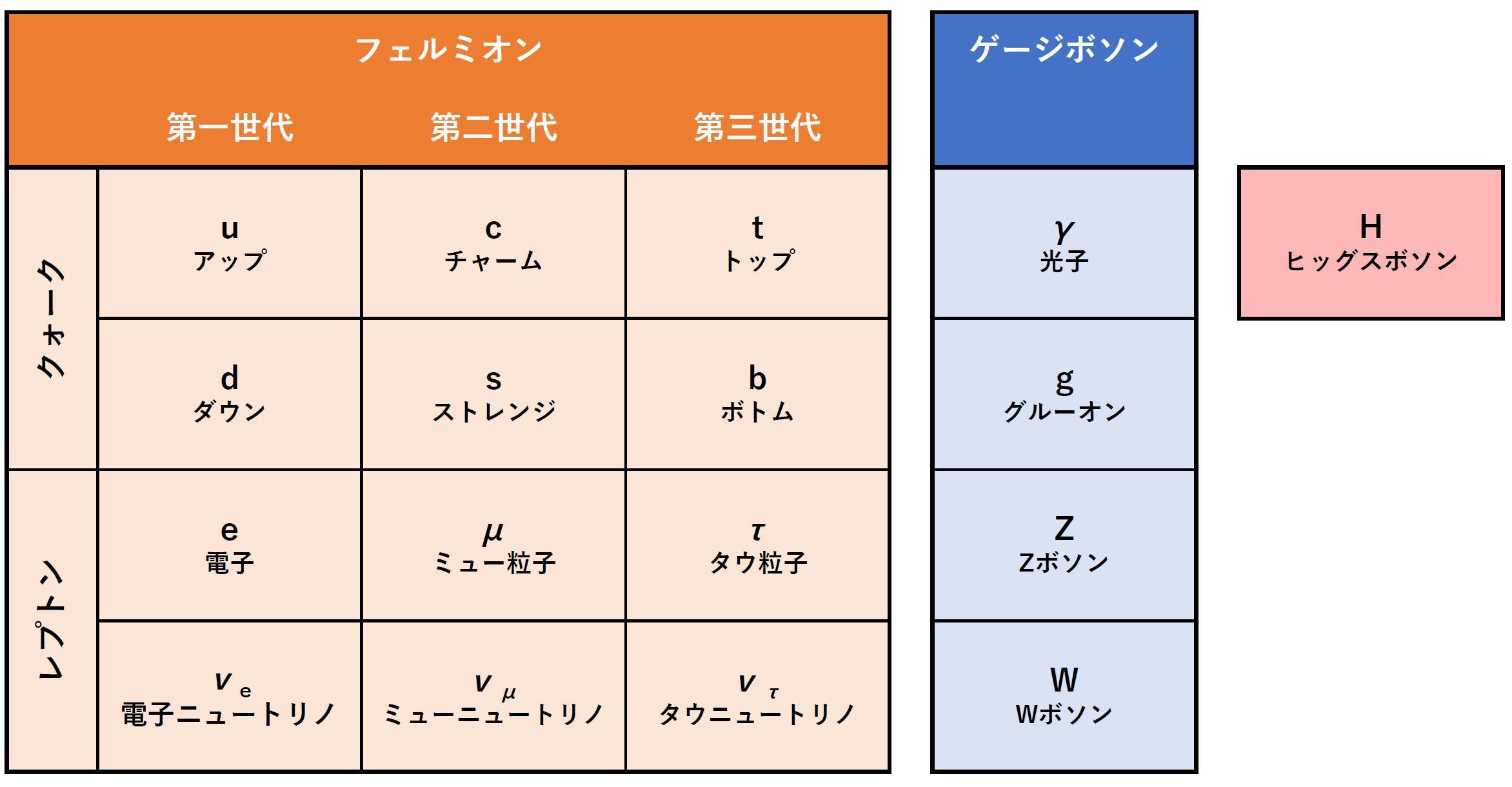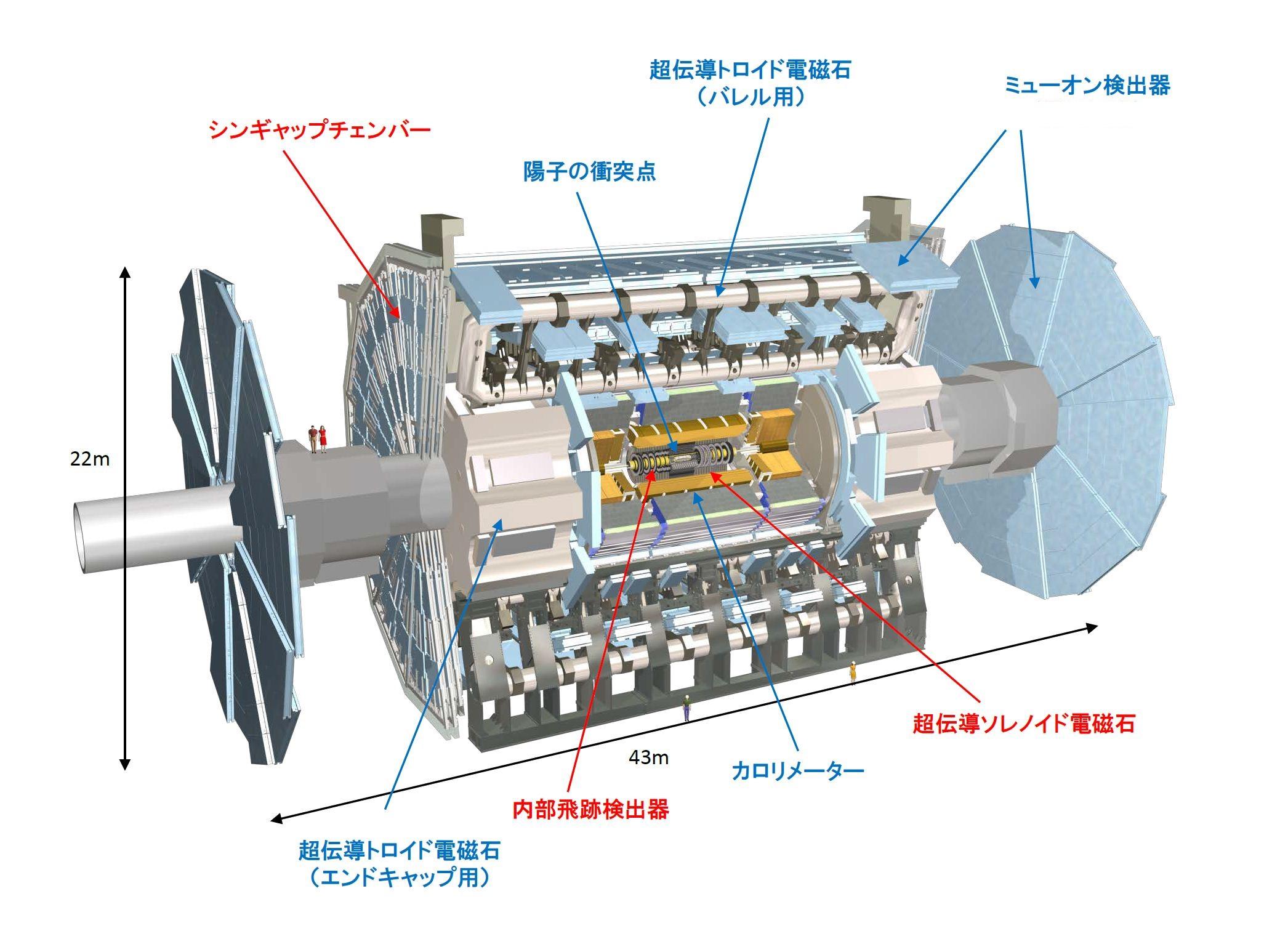The smallest elements which make up matters are called elementary
particles.
In ancient Greece, people thought that matters are made from "air, soil, water, and fire",
At recent days, it is thought to be that matters are consist of quarks and leptons, and these particles are considered to be the elementary particles.
This picture is called "standard theory of elementary particles", and the particles are illustrated in the bottom figure.

The elementary particles that make up matters are called "Fermions", while "Gauge bosons" are responsible for mediating forces. Higgs boson is a special particle that fills the vacuum and gives masses to the elementary particles by interacting with them. Higgs boson has not been discovered for many years, but the existence was confirmed in 2012 by the LHC experiments described later.
Understanding the properties of these elementary particles and solving their interactions is the primary purpose of research in the elementary particle physics.
We can approach to Big-Bang with super huge accelerator LHC
The present universe has been chilled over 13.8 billion years since its birth, and thus the past universe has been a very hot, and high energy state. It is thought to be that there was the world of elementary particles.
Such particles in the early universe can be studied in detail if we can artificially create high energetic state. The key is a particle accelerator.
There is a machine on the suburbs of Geneva, Switzerland that artificially create high temperature conditions at just 10^-12 seconds after the birth of the universe, and we can understand the behavior of elementary particles by using this accelerator. That is the Large Hadron Collider (LHC). LHC is the world's largest and strongest accelerator with a circumference of 27 km and can accelerate protons to 99.999999% of the speed of light. By colliding them, it reproduces the state at 10^-12 seconds after the birth of the universe.
Also, since elementary particles made in particle collisions will immediately decay into many particles, high-precision detectors are needed to measure them.
The ATLAS detector is one of them. The ATLAS detector is a cylindrical detector with a total length of 43 m and a height of 22 m, and has the schematic structure shown in the figure below.

In the ATLAS experiment, there are 3000 researchers from all over the world, and we are conducting research with them. Shinshu University High Energy Laboratory is also a member of the collaboration.
I have been involved for many years in the operation of the muon trigger detector of the ATLAS detector.
What is a trigger?
Actually, in the LHC, the probability of generating a physical event of interest is very low. It's like looking for treasures from a huge pile of trash, but the key selecting them efficiently is a "Trigger". The LHC experiments cannot keep every tracks of all collision events due to various limitations. For this reason, we must select event immediately by trigger using specially designed electronic circuits on a computer farm consisting of thousands of computers and store only the events that have passed through triggers.
Such triggers are essential for researches at the LHC, but many graduate students from various countries are active in this field. Why do you not play an active part in huge international collaboration, too?
Precision test of Standard Model and Search for Physics Beyond the SM
I focused on the top quark, which is the heaviest particle in the SM and can probe the precision test of the SM and many searches for physical beyond the SM. This figure shows the mass of elementary particles. Top quarks are by far the heavy quarks (fermions), which are even heavier than bosons such as Higgs bosons and gauge bosons. The reason why it is so heavy is a mystery and is considered to be closely related to Electroweak symmetry breaking. Also, if there is an unknown heavy elementary particle, it is suggested that they strongly couple with the top quark.
You may be able to discover unknown elementary particles via precision measurement of top quark.





